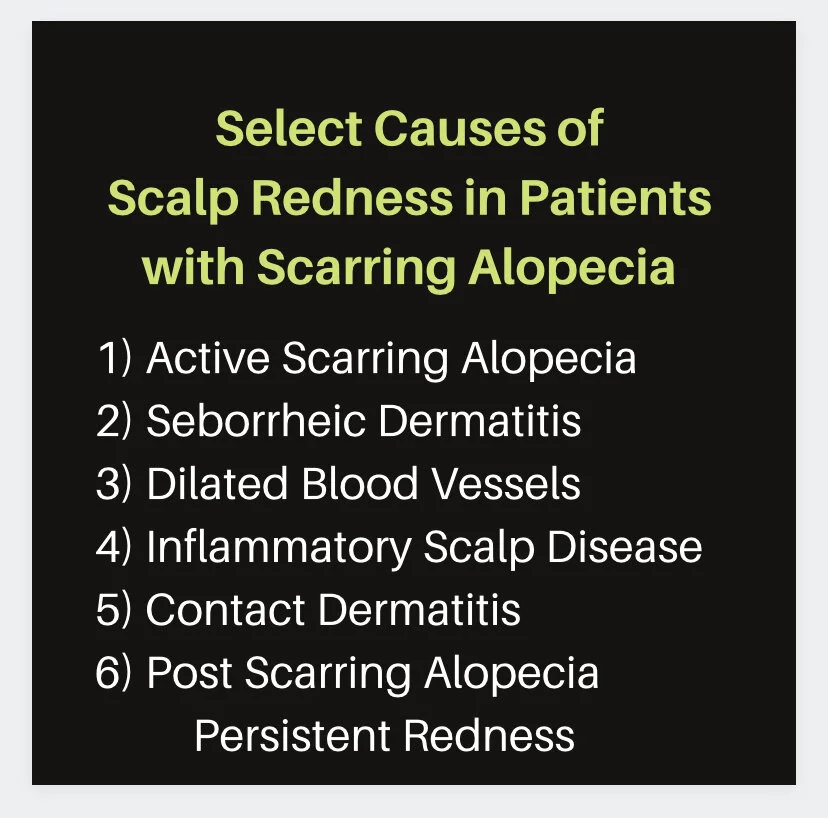National Scarring Alopecia Awareness Month (Day 24, Myth 9): Is scalp redness always a bad sign?
Scalp Redness in Scarring Alopecia … Not Always a Sign of Disease Activity.
Let’s talk about some of the myths pertaining to the topic of scalp redness. To start off, red scalp is not normal. For patients with scarring alopecia, a red scalp is often a sign of disease activity. the image below shows a patient with active scarring alopecia and significant redness. However, one must be careful about concluding it’s always an indicator of disease activity. It’s not always!
Scalp redness in a patient with scarring alopecia (lichen planopilaris). For many patients with scarring alopecia (but not all), scalp redness indicates that disease activity is still high.
There are many causes of redness and some of the causes are increased in frequency in those with scarring alopecia.
1. Seborrheic dermatitis
Past studies have taught us that incidence of seborrheic dermatitis is increased in some patients with scarring alopecia. What does seborrheic dermatitis look like? Well, it’s red and itchy and scaly - just like many scarring alopecias!
2. Topical steroids
Excess use of topical steroids is another cause of scalp redness. Here the skin may be normal appearing but the blood vessels are dilated. We call these “telangiectasias.”
Scalp redness in a patient with scarring alopecia. Here, scalp redness is due to dilated blood vessels or ‘telangiectasis’ rather than high disease activity. This patient was using more and more topical steroids to combat the redness and this only worsened the problem. Reducing steroids was the strategy to overcome the telangiectasias.
3. Contact Dermatitis
Contact dermatitis is also on the list of possibilities- especially irritant contact dermatitis. Shampoos, minoxidil, compounded formulas, serums all have the potential to irritate.
4. Post scarring alopecia persistent erythema (PSAPE)
Finally some scarring alopecias just remain red. Year after year, the redness stays around despite the fact that symptoms have long gone and hair loss has long stopped. I call this post scarring alopecia persistent erythema (PSAPE). Erythema means redness.
Conclusion
In conclusion, redness is a usually a concern in patients with scarring alopecia. Although it is usually a sign that the scarring alopecia is active, it is not always. Other causes must be considered. In some cases of redness, like corticosteroid-induced telangiectasias, treatment might actually need to be reduced rather than increased.
This article was written by Dr. Jeff Donovan, a Canadian and US board certified dermatologist specializing exclusively in hair loss.



